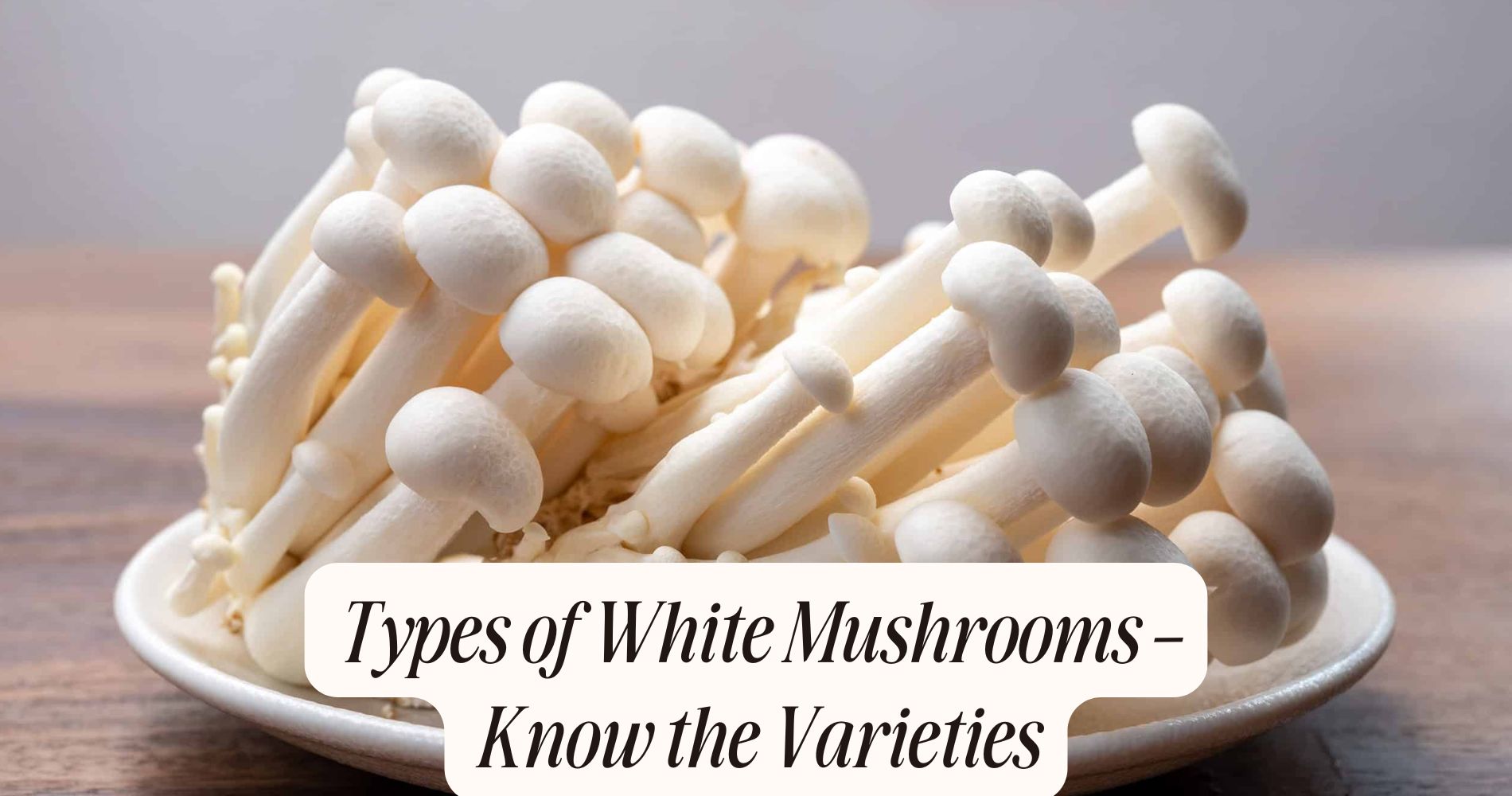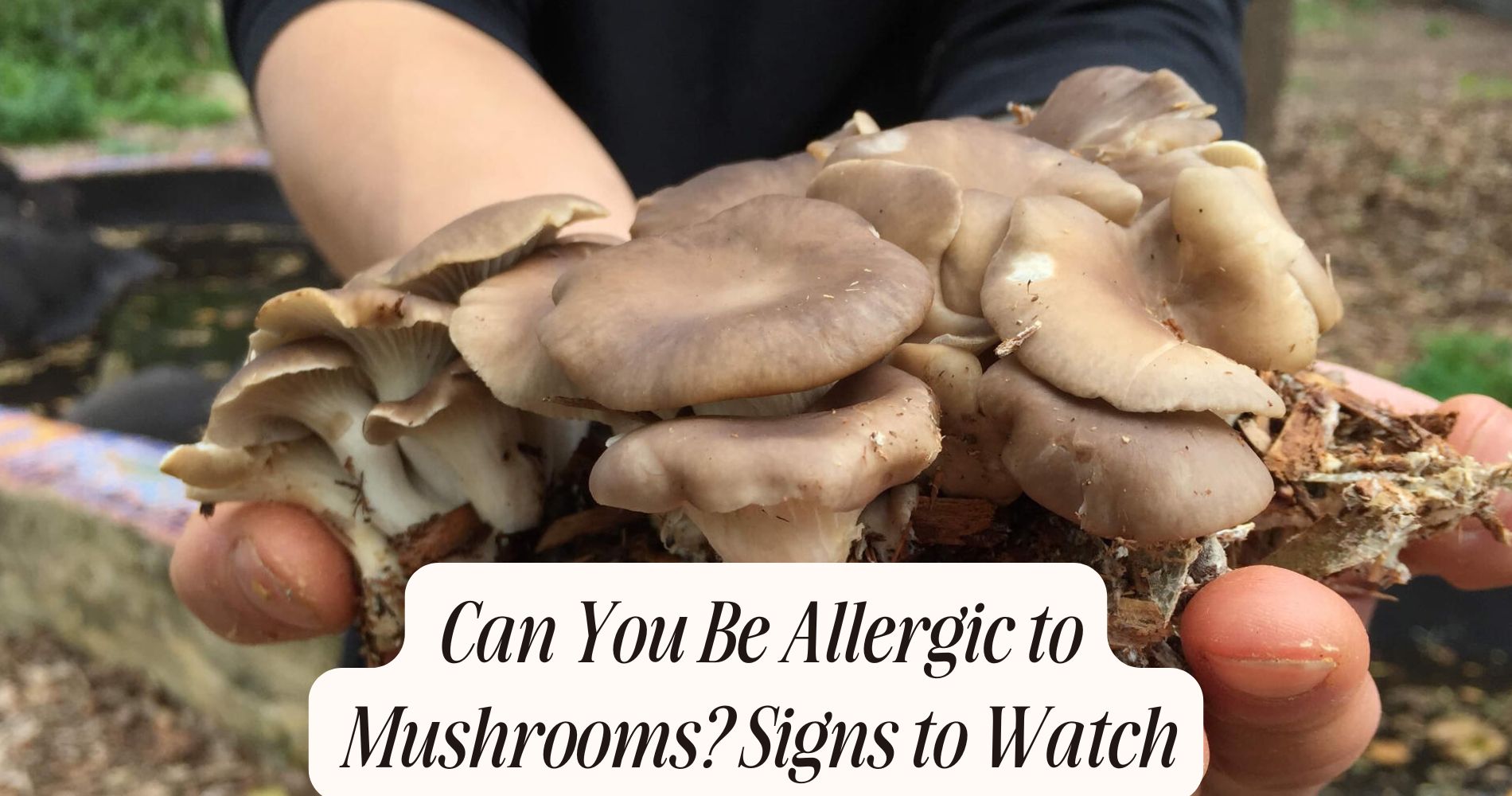
Types of White Mushrooms – Know the Varieties
When you explore types of white mushrooms, you’ll find diverse species like Agaricus bisporus (button mushrooms, family Agaricaceae), Pleurotus ostreatus (white oyster, family Pleurotaceae), Flammulina velutipes (enoki), Hypsizygus tessellatus (white beech, family Lyophyllaceae), and Hericium erinaceus (lion’s mane, family Hericiaceae). Each shows distinct morphological traits, substrate preferences, and nutrient profiles driven by their unique phylogeny. There’s even more scientific insight waiting as you encounter their cultivation and culinary distinctions.
Button Mushrooms
Curiously, what distinguishes button mushrooms from other varieties is their scientific classification: Agaricus bisporus. You’ll recognize these fungi by their small, round caps, white coloration, and short stems.
Taxonomically, they belong to the Basidiomycota division, Agaricales order, Agaricaceae family. You’ll often encounter them at the immature stage, before they mature into cremini or portobello forms.

Nutritional benefits of button mushrooms include low calories, high water content, and significant levels of B-complex vitamins—such as riboflavin, niacin, and pantothenic acid—plus essential minerals like selenium, potassium, and phosphorus.
Their culinary uses are extensive; you can sauté, grill, or roast them, and they readily absorb flavors from herbs and spices. You’ll find them in salads, stir-fries, soups, and a wide array of global cuisines.
White Oyster Mushrooms
Although less commonly found in supermarkets than button mushrooms, white oyster mushrooms are scientifically categorized as Pleurotus ostreatus. You’ll recognize their fan-shaped caps, decurrent gills, and short or absent stems.
They are distinguished by their rapid mycelial growth, thriving on lignocellulosic substrates such as straw or sawdust. This makes them ideal for both commercial and home cultivation techniques.
Controlled humidity and temperature are essential for preferable fruiting, and you should maintain sterile conditions to prevent contamination.

White oyster mushrooms offer notable nutritional benefits, providing high-quality protein, B vitamins, potassium, and antioxidants. They also contain β-glucans, which support immune modulation.
Low in calories and fat, they suit a balanced diet.
Taxonomically, you’ll place them in the Basidiomycota division, Agaricales order, and Pleurotaceae family, further distinguishing them from other white mushroom varieties.
Enoki Mushrooms
How do you distinguish Enoki mushrooms from other white varieties? You’ll recognize Enoki (Flammulina filiformis) by their slender, elongated stems and petite, convex caps, typically clustered in tight bunches.
Unlike other Agaricales, Enoki exhibits a pure white hue due to cultivation in low-light, high-CO₂ environments. This species, native to East Asia, thrives in cooler climates and decaying hardwood substrates.

Enoki mushrooms offer notable nutritional benefits: they’re low in calories, high in dietary fiber, and provide essential micronutrients like niacin, thiamine, and potassium. They’re also a source of antioxidants such as ergothioneine.
In terms of culinary uses, you’ll find Enoki’s delicate texture and mild flavor ideal for salads, soups, hot pots, and garnishes. Their structural integrity holds up well in both raw and lightly cooked applications.
White Beech Mushrooms
While often grouped with other cultivated white fungi, White Beech mushrooms (Hypsizygus tessellatus) display distinct morphological features that set them apart. You’ll recognize their clustered growth habit, with slender, elongated stipes and convex, ivory-colored caps.
Taxonomically, they belong to the family Lyophyllaceae and exhibit a dense, crunchy texture compared to other Agaricales. White Beech mushrooms offer notable nutritional benefits, including high protein content, dietary fiber, and significant levels of B vitamins, potassium, and ergothioneine, an antioxidant compound.
When considering culinary uses, you can sauté, roast, or incorporate these mushrooms into stir-fries and soups, where their firm structure and subtle umami flavor persist through cooking. Their adaptability and nutritional profile make them highly desirable in both home and professional gastronomy.
Lion’s Mane Mushrooms
Among white mushrooms, Lion’s Mane (Hericium erinaceus) stands out for its unique morphology and taxonomic placement within the family Hericiaceae. You’ll recognize Lion’s Mane by its cascading, icicle-like spines rather than a conventional cap and stem.
This basidiomycete forms dense, globular clusters and is saprotrophic, decomposing hardwood substrates. Taxonomically, it’s distinguished from Agaricaceae and Pleurotaceae by its tooth-like hymenophores.
When considering nutritional benefits, Lion’s Mane is notable for high protein content, polysaccharides, and bioactive compounds such as hericenones and erinacines, which are investigated for neuroprotective properties.

Culinary uses are diverse; you can sauté, roast, or use it as a meat substitute. Its mild, seafood-like flavor adapts well to various preparations, making it a favored ingredient in gourmet cuisine.
Snow Mushrooms
Curiously distinct within the Basidiomycota, Snow Mushrooms (Tremella fuciformis) represent a gelatinous species classified under the family Tremellaceae. You'll recognize their frond-like, translucent fruiting bodies, typically manifesting on decaying hardwood in subtropical climates.
Scientifically, Tremella fuciformis is parasitic, requiring a host fungus—often Annulohypoxylon species—for successful development. When considering cultivation techniques, you must co-inoculate both Tremella and its host onto a sterilized wood substrate under controlled humidity and temperature. This dual-culture system ensures best yield.
From a nutritional perspective, Snow Mushrooms offer polysaccharides, dietary fiber, and vitamin D, contributing notable immunomodulatory and antioxidant properties. Their low-calorie content and bioactive compounds make them valuable for functional foods.
You can integrate Snow Mushrooms into diverse culinary or nutraceutical applications for both texture and health benefits.
Discover the Power of Super Mushroom Gummies
If you're looking to enjoy the benefits of mushrooms without the hassle of cooking, meet Well Gummies' SUPER MUSHROOM GUMMIES! These convenient, chewable gummies pack the power of 10 functional mushrooms into one delicious wild berry-flavored treat. Fuel your brain, energize your body, and support your immune system naturally with every bite. No jitters, no crash—just calmer energy, sharper focus, and a balanced body and mind. Enjoy the taste of fresh wild berries, as satisfying as your favorite candy. Shine all day with Well Gummies!
Frequently Asked Questions
Are White Mushrooms Safe to Eat Raw?
You can safely eat Agaricus bisporus, commonly known as white button mushrooms, raw, provided they're properly cleaned after mushroom harvesting. Raw consumption retains nutrients, making them ideal for white mushroom recipes, though light cooking may enhance digestibility and flavor.
How Should White Mushrooms Be Stored for Maximum Freshness?
To maximize Agaricus bisporus freshness, you'll use refrigeration techniques at 1-4°C. Store mushrooms in a breathable storage container, like a paper bag or ventilated box, to minimize condensation and prevent microbial proliferation, extending post-harvest shelf life.
Can White Mushrooms Cause Allergic Reactions?
You can experience a mushroom allergy from consuming Agaricus bisporus. Allergic reactions symptoms include urticaria, angioedema, or respiratory distress. Sensitization occurs via inhalation or ingestion, so monitor any adverse immunological responses after exposure to white mushrooms.
What Are the Nutritional Benefits of White Mushrooms?
You gain significant nutrient density from white mushrooms (Agaricus bisporus), including B vitamins, selenium, and ergothioneine. These compounds confer health benefits, such as antioxidant activity, immune modulation, and support for cellular metabolic pathways, enhancing your overall physiological function.
How Do You Clean White Mushrooms Properly?
To guarantee gourmet preparation, you should employ precise cleaning techniques: gently brush Agaricus bisporus with a soft brush or damp paper towel, avoiding water immersion to prevent cellular degradation and preserve morphological integrity for ideal culinary texture and flavor.
Conclusion
Exploring white mushrooms, you’ve seen distinct taxa: Agaricus bisporus (button mushroom), Pleurotus ostreatus (white oyster), Flammulina velutipes (enoki), Hypsizygus tessellatus (white beech), Hericium erinaceus (lion’s mane), and Tremella fuciformis (snow mushroom). By recognizing their morphological characteristics and scientific classification, you’ll confidently distinguish edible white fungi. Understanding their taxonomy not only enriches your culinary repertoire but also fosters safer, more informed foraging and consumption. Embrace mycology’s diversity and deepen your gastronomic knowledge.




